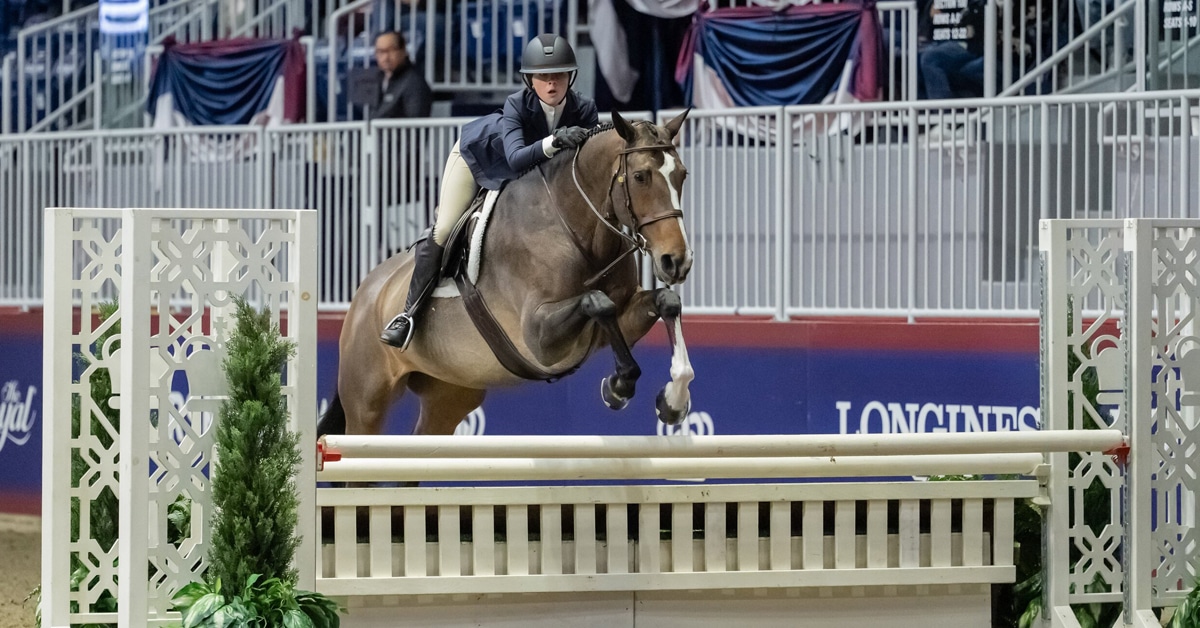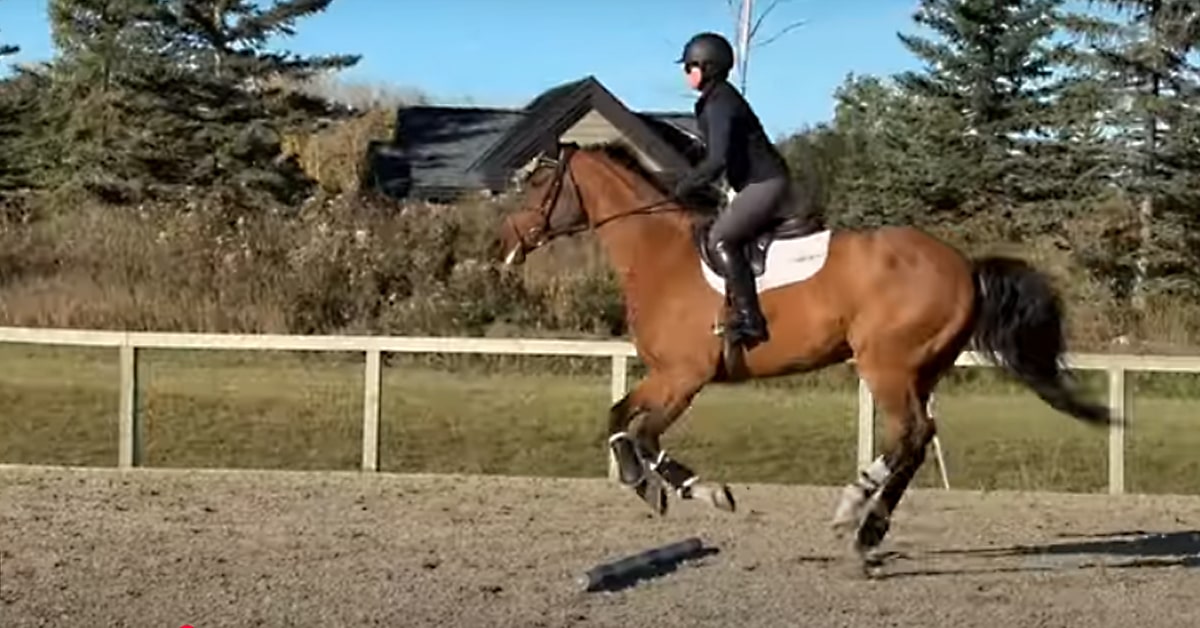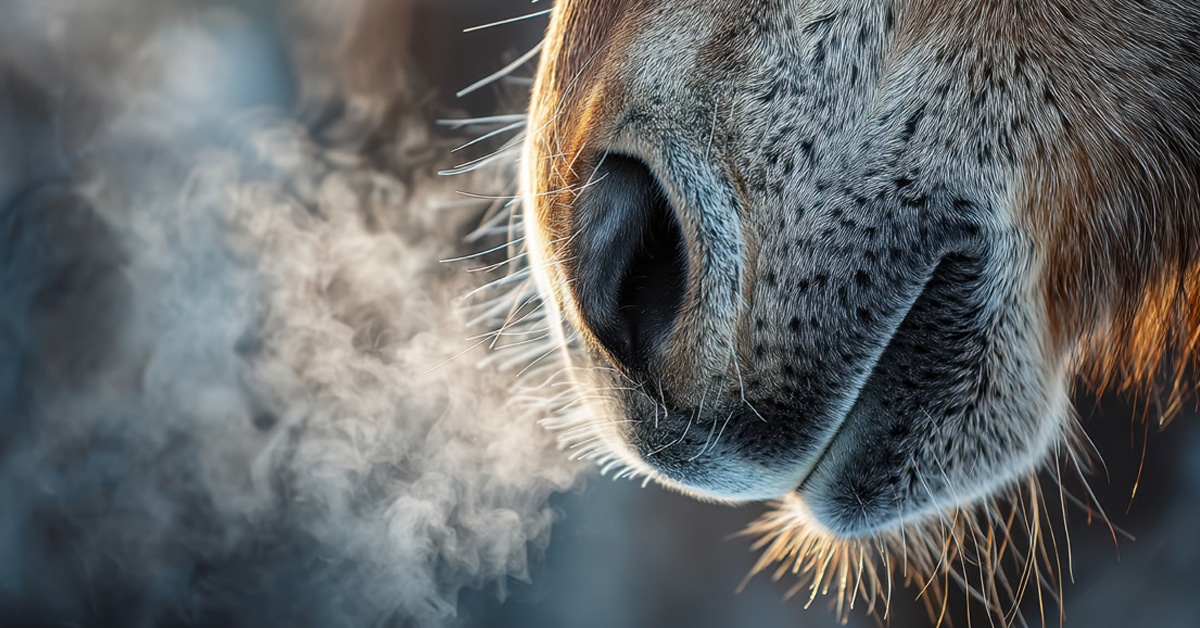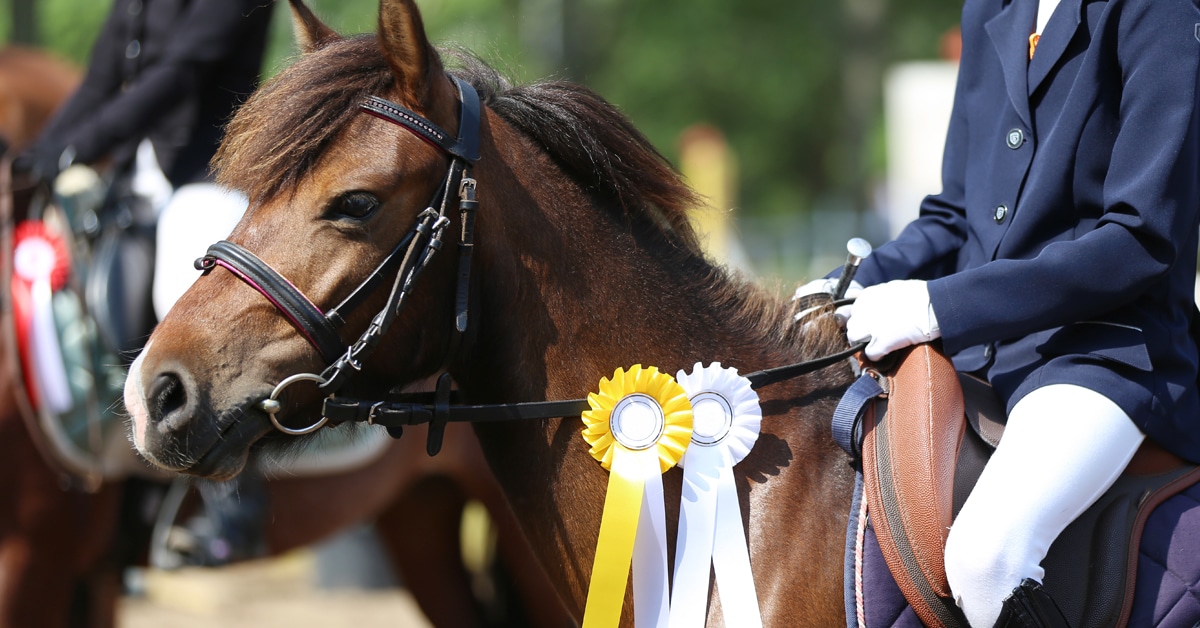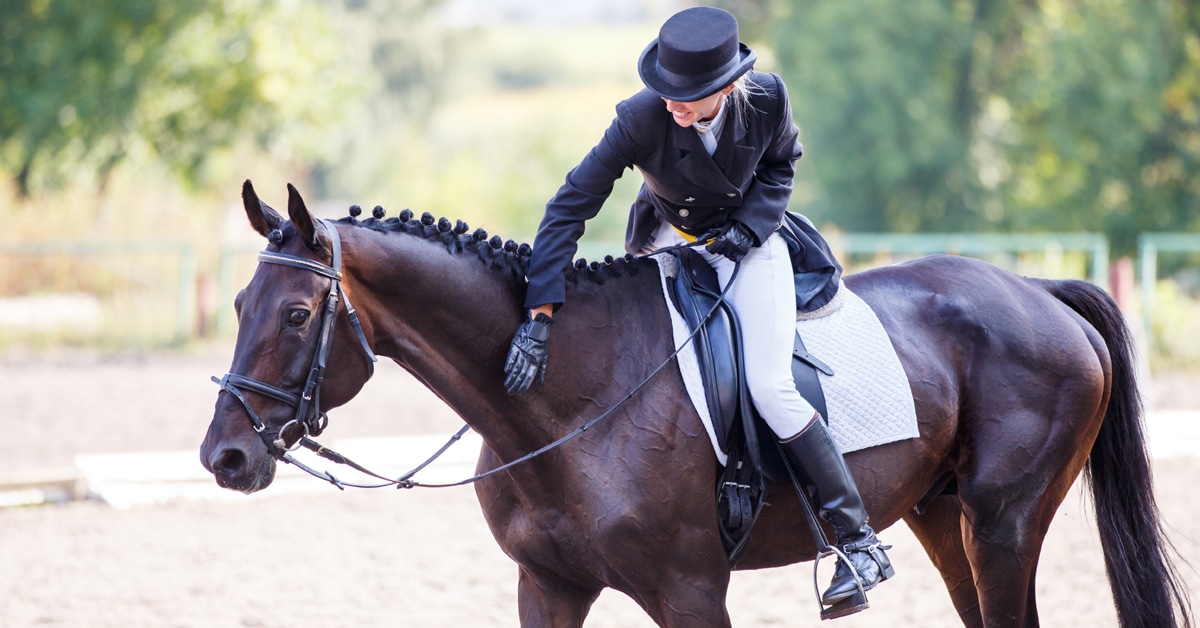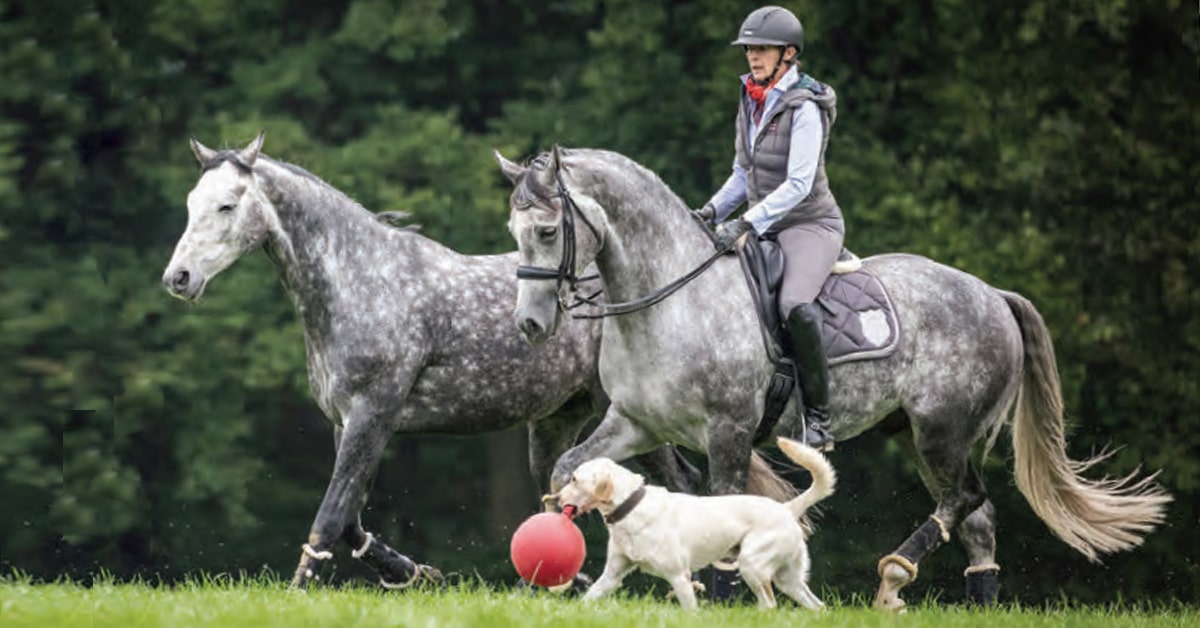In the wake of multiple abuse allegations brought forward in recent months against top riders (Helgstrand Dropped from Danish Dressage Squad After TV Exposé / Cesar Parra Suspended for Animal Abuse Allegations / EC Provisionally Suspends Canadian Dressage Riders), growing concerns for animal welfare within the sport of dressage continue to mount. Although the FEI continues to assert its commitment to equine welfare, recently published studies and growing trends in competitive dressage are shedding light on troubling patterns to the contrary.
A 2024 study (Kienapfel et al.) analyzed horse-and-rider pairs from 2018 to 2019 in the Grand Prix Special CDIO5* at the CHIO in Aachen, Germany. The 49 competitors were examined for head/neck position, oral behaviour, tail swishing, and conflict behaviours. Horses demonstrated notably more conflict behaviours and oral behaviours when they were ridden behind the vertical (BTV) and were consistently ridden in deeper angles BTV during the warm-up than in competition. Most horses were still ridden BTV in competition and displaying conflict behaviours, yet the study confirmed that horses ridden BTV consistently scored higher than horses ridden with their profiles in front of the vertical.
A similar study (Hamilton et al.) was conducted in 2019 with riders in Preliminary, Novice and Elementary levels in British Dressage with the aim to investigate a correlation, if any, between conflict behaviours and judging patterns. Conflict behaviours were seen in 97.6% of the five to seven movements analyzed per test, and horses ridden BTV consistently scored higher than those in front of the vertical. Like the study in Aachen, a trend was clear: Judges are giving higher marks to riders who ride their horses in hyperflexion regardless of these horses displaying higher rates of distress via conflict behaviours.
“Behavioral signs of conflict are indicative of compromised welfare in ridden horses and the results of this study suggest that a greater focus on such behavior should be included in dressage judge training and performance evaluation.”
As per the abstract of that study: “Behavioral signs of conflict are indicative of compromised welfare in ridden horses and the results of this study suggest that a greater focus on such behavior should be included in dressage judge training and performance evaluation.” The German study concluded similarly. “These results undermine animal welfare concerns during world class dressage competitions.”
Unfortunately, this trend has been developing for decades. A study published in 2014 (Lashley et al.) compared “whether the head angulation of elite dressage horses has changed over the last 25 years, and whether head angulation correlates with the competition score awarded.” This study looked at the head angle measured from videos recorded during the Grand Prix test at the 1992 Olympic Games and the 2008 World Cup Final during collected canter, collected trot, passage, and piaffe.
Although horses were BTV in collected trot and collected canter in both 1992 and 2008, the occurrence of horses being BTV in piaffe and passage was significantly higher in 2008 than in 1992. A correlation was found with higher scores being given to head positions that were further BTV during piaffe in 2008. In all analyzed paces in 2008, horses were BTV, whereas in 1992 this was only the case for collected trot and collected canter. As with the more recent studies, FEI dressage judges have not been penalizing horses for head angles BTV.
With the 85° poll flexion position (5° in front of the vertical), relaxation behaviours were significantly more frequent, as well as turning the ears forward and ear play.
The Significance of Poll Angle
An interesting study by Paula Tilley et al. (2023) sought to investigate the physiological and psychological effects of less-exacerbated poll flexion angles. Their study analyzed behaviours and physiological responses in horses with as little as 15° difference in head/ground angles(85° vs 100°). Even at only 100° flexion (10° BTV), they found a significant increase in upper airway dynamic dysfunctions, including nasopharyngeal collapse, palatal instability and dysfunction, and intermittent bilateral arytenoid cartilage collapse – impairing the horse’s ability to breathe and swallow. Additionally, conflict behaviours were consistent with all other aforementioned studies, and with significantly more frequent physiological concerns including excessive drooling, oral behaviour, and pinning the ears.
Adversely, with the 85° poll flexion position (5° in front of the vertical), relaxation behaviours were significantly more frequent, as well as turning the ears forward and ear play (movement). The outcomes comparing riding in these very close head/neck positions truly demonstrate how significantly a slight difference in angle can impact the horse’s respiratory system, behaviour, and well-being.
The authors of that study concluded that “the relevance of keeping the amount of time spent riding with a poll flexion ground angle greater than 85° to an essential minimum should be further explored for the benefit of horse performance and the horse’s quality of life in sport…”
These findings are consistent with conclusions drawn from an Australian study (McGreevy et al., 2010) that horses naturally have an open head/neck angle, and that horses ridden BTV are being ridden “at odds with their natural carriage.” In correct schooling, “flexing at the poll, poll flexion, or roundness results in the nasal plane being approximately 6° in front of the vertical or 12° at walk (McGreevy et al., 2005).”
Despite this, more and more horses are being ridden BTV in competition. A 2014 study found that horses ridden BTV displayed more than twice as many conflict behaviours per testing parametres than horses in front of the vertical.(Kienapfel et al.) “Since this effect was observed regardless of the competition level, it is suggested that the flexed posture itself rather than the rider’s skills or the training level of the horse is the main factor inducing conflict behaviour.”
Furthermore, horses in the higher levels showed significantly (P = 0.0014) more conflict behaviours compared to horses in the lower levels, which highlights concerns in the training practices involved in advancing horses to these levels.
It’s worth noting that in the competitions observed for this study, BTV was penalized with lower marks in the lower levels, but not in the higher competition levels.
Letting the Horse Decide
A study in 2008 (von Borstel et al.) involving 15 horses explored what horses would choose. They rode horses through a ‘Y’ maze with one branch, R, consistently ridden in rollkur, while through the other, N, with a neutral head/neck position (at or in front of the vertical). Through the R branch, horses were slower with increased conflict behaviours (P<0.05), including attempted bucks, than when through the N branch. For the study, a fear element was included for eight of the horses. Those ridden in rollkur had heightened fear reactions, increasing the danger to the rider, and consistently took longer to approach the object.

Maria von Essen (SWE) and Invoice, second place finishers at the FEI Dressage World Cup in Gothenburg, showing a lovely ‘happy athlete’ profile. (FEI/Kim C Lundin photo)
After the conditional phase of the test, horses were given the choice to ride through the R branch or the N branch. Fourteen of the 15 horses consistently chose the N branch for a neutral head/neck position.
This study, like the others, concluded coercively obtained rollkur has a strong, negative impact on equine welfare as well as rider safety, and suggest that rollkur should not be practiced.
The Changing Rulebook
The FEI Dressage Rules 2024 (26th ed.) in Article 400, declare “The FEI established an International Dressage Event in 1929 in order to preserve the Equestrian Art from the abuses to which it can be exposed and to preserve it in the purity of its principles, so that such principles of the discipline could be handed down intact to future generations of Athletes.”
However, there is no longer any mention of what those principles are, or what of the Equestrian Art is to be preserved. The “Object and General Principles of Dressage” were described in great detail (16 pages) in the 25th edition (2020), but nothing of that has been preserved in the newest revision.
“The head should remain in a steady position, as a rule slightly in front of the vertical, with a supple poll as the highest point of the neck, and no resistance should be offered to the Athlete.” ~ FEI Dressage Rules, 25th edition
Article 401 in the 25th edition of the FEI Dressage Rules had described the following:
“1. The object of Dressage is the development of the Horse into a happy Athlete through harmonious education. As a result, it makes the Horse calm, supple, loose and flexible, but also confident, attentive and keen, thus achieving perfect understanding with the Athlete. These qualities are demonstrated by:
• The freedom and regularity of the paces.
• The harmony, lightness and ease of the movements.
• The lightness of the forehand and the engagement of the hindquarters, originating from a lively impulsion.
• The acceptance of the bit, with submissiveness/throughness (Durchlässigkeit) without any tension or resistance. …
4. By virtue of a lively impulsion and the suppleness of the joints, free from the paralysing effects of resistance, the Horse obeys willingly and without hesitation and responds to the various aids calmly and with precision, displaying a natural and harmonious balance both physically and mentally.
5. … The head should remain in a steady position, as a rule slightly in front of the vertical, with a supple poll as the highest point of the neck, and no resistance should be offered to the Athlete.”
These passages, still referenced in Equestrian Canada’s Section E, are of particular significance for multiple reasons related to welfare, not least of all because of key words including loose, confident, and keen which acknowledge the horse’s sentience and encourage willing participation.
Now, however, the definitions of Equestrian Art have been removed from the Rules while trends proliferate in direct contradiction of those stricken sentiments.
A Need for Structured Guidelines
Due to the subjective nature of judging, it’s not always clear why scores are graded as they are. One study examining 510 judging scores gathered from seven elite-level dressage competitions between May 2022 and April 2023 confirmed that factors such as if riders competed in their home country, if they had the same nationality as the judges, their starting order during the competition, and how they were ranked according to previous performances influenced the final results. (Wolframm, 2023).
In regards to welfare, a study of the 2008 Olympic dressage results investigated the consistency of judge scoring in four categories: paces, impulsion, submission, and rider position (Hawson et al., 2009). The results for submission were most inconsistent and spoke “of considerable variability in judging and suggest that, despite the relevance of submission to horse welfare, judges have considerable difficulty scoring in this domain and aligning their scores with overall performance.”
Because hyperflexion is rewarded, possibly mistaken as submission, while the horses’ distress goes largely ignored, patterns of abusive practices implemented to achieve it are perpetuated.
Detailed guidelines are needed to better define judging policy for improved consistency, especially in relation to welfare concerns. “In order to assist judges in providing objective, transparent scores, a clear evidence-based set of judging guidelines should be developed, which would prevent judges from having to resort to cognitive short cuts. That way, the complexity of judging is reduced, making scores more objective, transparent and fair.”(Wolframm, 2023)
While the FEI’s PR efforts have aimed to placate tensions touting equine welfare as paramount, the trending judging practices are contradictorily rewarding riding practices identified to be psychologically abusive and physically damaging to the horses, inhibiting their ability to breathe, increasing cortisol as a stress response, causing damage to the horse’s internal structures, and ultimately acting against the interests of equine welfare.
Because hyperflexion is rewarded, possibly mistaken as submission, while the horses’ distress goes largely ignored, patterns of abusive practices implemented to achieve it are perpetuated. Until the release of Operation X in 2023, complaints against trainers for some of these distressing training methods were deemed insufficient for any action.
Where do we go from here?
At a time when the sport needs transparency more than ever, the FEI caused a furor when it announced new social media guidelines restricting the posting of video footage of select FEI events taken by spectators, riders, grooms, owners, and even accredited press on the Field of Play, including all competition and warm-up areas. While the move was seen by many as an attempt to control the visual portrayal of the sport, they later clarified their stance as simply protecting broadcast rights holders, continuing to encourage the public to submit video footage of any instances of equine abuse they might witness.
Regardless of the reasons, the social media guidelines aren’t the only FEI guidelines under scrutiny. The Dressage Rules need to define clear parameters of the Equestrian Art as it has in past editions, and clearly detail matters related to head/neck positions, submission and their relation to equine welfare; and judging policies need to act in accordance with those parameters. If welfare issues like hyperflexion are penalized rather than rewarded, we might begin to reverse the ever-increasing popularity of its use.
Without implementing and adhering to quantifiable judging policies that proactively support and uphold welfare, the purported idea that the sport of dressage promotes harmony between horse and rider is a fallacy.
The Latest
